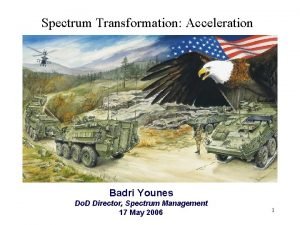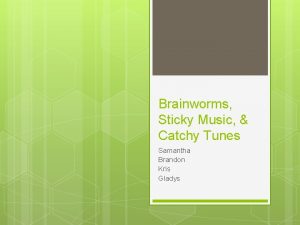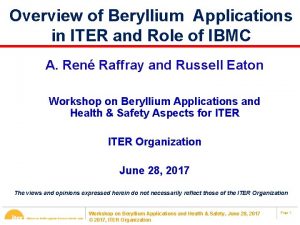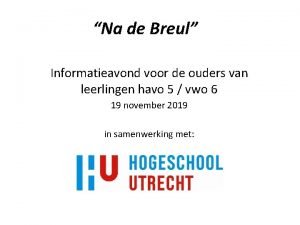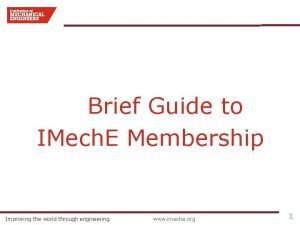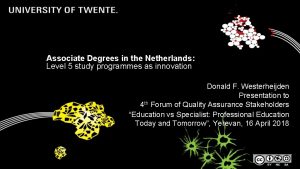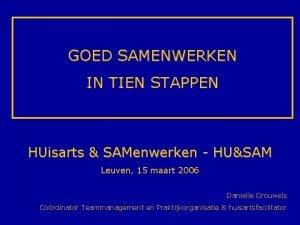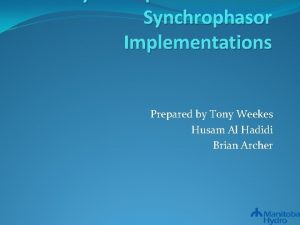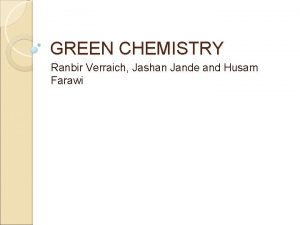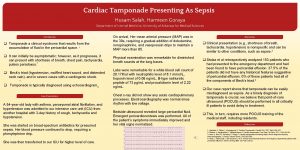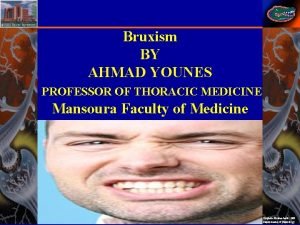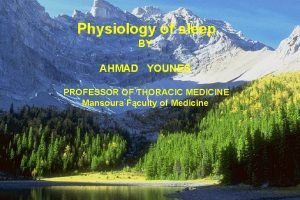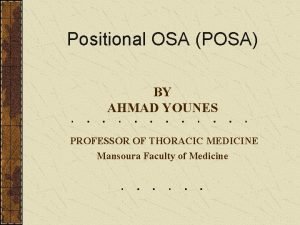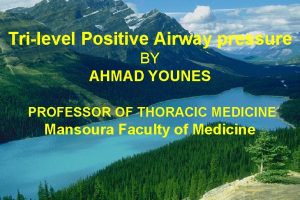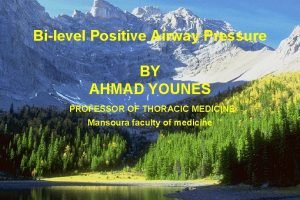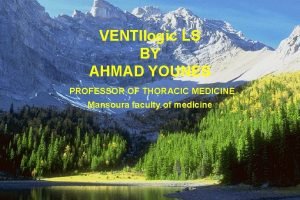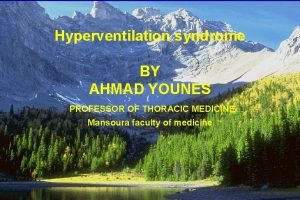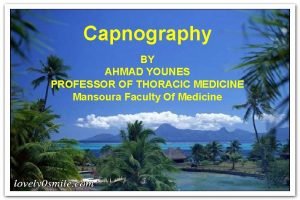Husam M Younes Ph D Associate Professor of





















- Slides: 21

Husam M. Younes, Ph. D Associate Professor of Bio-Pharmaceutics & Polymeric Drug Delivery Research Lab (PPDDRL) College of Pharmacy, Qatar University, Doha, QATAR. Fabrication & characterization of 3 D electrospun biodegradable nanofibers for wound dressing, drug delivery and other tissue engineering applications The 5 th International Conference and Exhibition on Pharmaceutics & Novel Drug Delivery Systems - Dubai, UAE March 17 th , 2015


» Prepare biodegradable electrospun fibers using drug-unloaded and drug-loaded polymers to demonstrate the formation of 3 D electrospun scaffolds. » Characterize the prepared electrospun fibers using Differential Scanning Calorimetry (DSC), Fourier Transform-Infrared Spectroscopy (FT-IR) and Scanning Electron Microscopy (SEM). Objectives

» The main purpose of using a wound dressing is to protect the wound from environmental threats and promote tissues re-generation and replacement. » Traditional dressing challenges direct towards advanced multifunctional wound dressing development. » Use of polymers in tissue engineering and drug delivery. ˃ Electrospinning Background

Electrospinning

» Amoxicillin Trihydrate (AMX), one of the most important antibiotics used in wound dressing and other tissue regenerative applications, has been used as a model drug. » AMX- loaded PEG 35000 biodegradable electrospun nanofibers (BENS) were successfully produced by electrospinning and the interaction between Amx and PEG fibers was fully investigated. What was done?

» Solutions of PEG 35000 in chloroform of varying concentrations (20, 35, 40 % w/v) were prepared. » These solutions were used to fabricate BENS using ET. Different Voltage, flow rate and distance to collector were set to standardize the method. » 10% w/v AT in PEG 35000 solutions were prepared and fabricated to produce AMX loaded BENS. How Was it is done?

» Morphology, size and diameter of BENS were assessed using Scanning Electron Microscopy (SEM). » Fourier Transform Infrared (FT-IR) Spectroscopy was used to identify the interaction between PEG 35000 and AMX. » Differential Scanning Calorimetry (DSC) was used to assess the crystallinity and thermal behavior of the prepared BENS. » X-Ray Diffraction Analysis (XRD) » Cytocompatibility studies on unloaded BENS. Characterization

A B Images of (A) Blank & (B) AT loaded BENS Scaffolds/Dressings

100 Transmittance (%) 80 60 PEG before electrospinning 40 20 0 4000 3600 3200 2800 2400 2000 Wavenumber (cm-1) 1600 FT-IR of PEG 1200 800 400

100 Transmittance (%) 80 Amoxicillin 60 40 Amoxicillin+ 35% PEG ( after electrospinning). 20 0 4000 3600 3200 2800 2400 2000 Wavenumber (cm-1) 1600 1200 800 400 FT-IR of AMX BENS

SEM Analysis

35% PEG solution, electrospinning parameters which include a voltage of 14 KV, flow rate of 1 ml/h and distance of 15 cm between the needle and the collector

50 PEG alone before electrospinning Heat Flow Endo Up (m. W) 45 40 PEG alone after electrospinning 35 Amox Alone 30 Amox+PEG 25 20 15 10 5 0 0 20 40 60 80 100 120 Temperature (°C) 140 DSC Analysis 160 180 200

4500 4000 3500 Intensity (a. u. ) 3000 2500 PEG+Amx-PM 2000 Amx 1500 1000 500 0 0 2 4 6 8 10 12 14 16 18 20 22 24 26 28 30 32 34 36 38 40 42 44 46 48 50 52 54 56 58 60 2θ XRD Analysis

5000 Amox alone 4000 PEG 35000 before electrospinning PEG after electrospinning Intensity (a. u. ) 3000 PEG+Amox electrospun fibers PEG+Amox ( Physical mixture) 2000 1000 0 6 8 10 12 14 16 18 20 22 24 26 28 30 32 34 36 38 40 42 44 46 48 50 52 54 56 58 60 XRD All 2θ

Cytocompatibility Studies

• In vitro degradation studies • Copolymerization of PEG with hydrophobic polymer to increase degradation time and mechanical strength. • Testing on an injured animal model Current Research. .

Graduate Students » Mr. M. Shaker (Ph. D) » Mr. Hany Ellaboudy (MSc) Post Docs & Research Assistants » Dr. Somayeh Zamani » Dr. Mohamed Shaker » Dr. Najla Benameur » Dr. Nazish Khan » Mr. Ahmed Abu Helwa, MSc » Ms. Sandi Ali Adib, MSc » Ms. Tamara Marji, MSc » Ms. Shiji Molma, MSc Collaborators Bristol University -UK • Dr. Wael Kafieneh – School of Cellular and Molecular Medicine Memorial University -Canada • Dr. Noriko Daneshtalab - Basic Medical Sciences • Dr. Pad Wadden - Pathology Department. Funding: • Undergraduate Students » Ms. Oraib Abdallah » Ms. Fatemeh Jalali Pharmaceutics & Polymeric Drug Delivery Research lab • NPRP grant # 09 - 969 - 3 - 251 (Qatar) NSERC – Discovery Grants (Canada) Acknowledgements

PPDDRL Team

Questions! H Y: May 23, 2011
 Promotion from assistant to associate professor
Promotion from assistant to associate professor Kinda younes
Kinda younes Younes aboutaib
Younes aboutaib Nick younes
Nick younes Bot fly eggs
Bot fly eggs Iter project associate
Iter project associate Cipd self-assessment examples
Cipd self-assessment examples Associate consultant in capgemini
Associate consultant in capgemini برنامهxx
برنامهxx Lonestar nursing application
Lonestar nursing application Tio collegegeld
Tio collegegeld Partner portal ruckus
Partner portal ruckus Imeche associate membership
Imeche associate membership Associate degree in the netherlands
Associate degree in the netherlands Safety associate
Safety associate Bcs membership
Bcs membership Michelin alliance associate dealer program
Michelin alliance associate dealer program Name something you associate with superman
Name something you associate with superman Associate program
Associate program Associate degree rmit
Associate degree rmit Certified system engineering professional
Certified system engineering professional Associate director meaning
Associate director meaning

